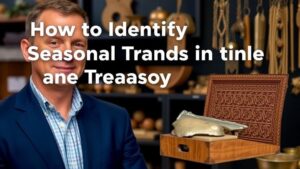How to Use Chronological Context to Solve Time-Based Treasure Puzzles
How to Use Chronological Context to Solve Time-Based Treasure Puzzles
Treasures hidden within time-based puzzles require a keen understanding of chronology and context. Employing chronological context allows puzzle solvers to decode clues effectively, prioritize tasks, and make sense of interconnected elements. This article explores the methodology for using chronological context in solving these intriguing puzzles, providing practical examples and case studies to illustrate key points.
The Importance of Chronological Context
Chronological context refers to the temporal framework within which events, facts, or clues are situated. In treasure puzzles, this can significantly affect how clues are interpreted and solved. Understanding the order of events or the timeline during which a puzzle was created enhances the solver’s ability to make connections between clues. This not only aids in decoding hidden messages but also in prioritizing actions based on temporal relevance.
Establishing a Timeline
The first step in utilizing chronological context is to establish a clear timeline. This involves organizing all clues and historical references chronologically. For example, a treasure puzzle based in a historical context may involve dates of significant events along with artifacts or other clues related to those events.
- Document the Clues: Collect all available clues and categorize them by date. This includes identifying any dates mentioned explicitly or inferred through context.
- Research Historical Context: Research the historical significance of the dates. Historical records, documents, or local lore can provide insight into what was happening at those times.
For example, suppose a puzzle involves a hidden treasure linked to a historical shipwreck. Establishing the date of the shipwreck allows solvers to investigate events in maritime history around that time, perhaps leading to other relevant clues.
Interpreting Clues Through a Chronological Lens
Once a timeline is established, the next step is to interpret clues with the chronological context in mind. This requires synthesizing information from various clues and determining which clues are related based on their temporal relevance.
- Clue Connection: Determine how clues may reference or relate to one another temporally. A clue referencing a certain event might imply a cause-and-effect relationship with an event or artifact mentioned later in the timeline.
- Sequential Actions: Analyze the order of operations necessary to solve the puzzle. Certain actions may only make sense when performed in a specific sequence, informed by the chronological context.
An excellent example can be found in the famous treasure hunt associated with the book The Secret. In this puzzle, timelines of various historical and cultural markers are intertwined. Solvers must determine not only what each clue signifies individually but also how they fit into the larger narrative presented over time.
Case Studies of Successful Puzzle Solving
Examining real cases where chronological context has proven beneficial can solidify understanding of the topic.
- The Zodiac Treasure Hunt: Participants in this hunt used dates from the Zodiacs creation to align clues with historical events referenced in the treasures lore, leading them closer to the treasures location.
- National Treasure Mysteries: In solving movie-inspired puzzles that rely on American historical events, solvers often sift through timelines of historical documents. Research into the signing of the Declaration of Independence, for example, helped users uncover treasure markers related to it.
Both of these examples highlight how critical chronology can be when deciphering meaning and context in treasure puzzles. By establishing a timeline, solvers can place clues in a relevant context that elucidates their significance.
Applying Learning to Future Puzzles
To effectively use chronological context for upcoming treasure puzzles, solvers can employ a systematic approach:
- Stay Organized: Maintain an organized timeline for clues as they are discovered, revisiting earlier clues as new insights come to light.
- Engage in Contextual Research: Don’t hesitate to research when a clue refers to specific notes or historic events to deepen your understanding.
- Practice Interconnected Thinking: Train the mind to think laterally about connections between clues across different time periods, as historical context often has overlapping narratives.
Conclusion
To wrap up, mastering the use of chronological context in time-based treasure puzzles transforms the approach to solving them. By establishing a solid timeline, interpreting clues through this lens, and learning from case studies, solvers enhance their odds of deciphering complex puzzles. systematic application of these principles in future puzzles not only boosts confidence but also elevates the entire treasure hunting experience.

